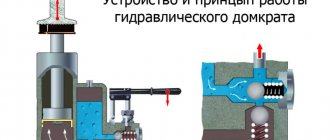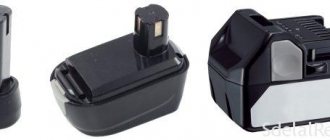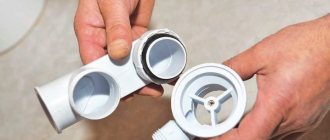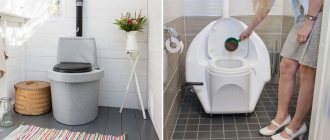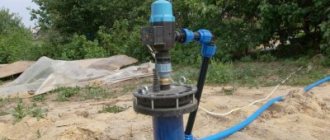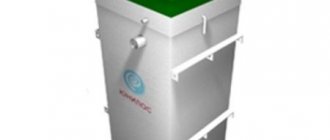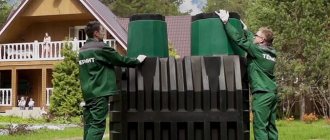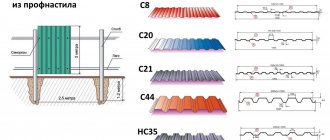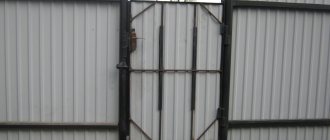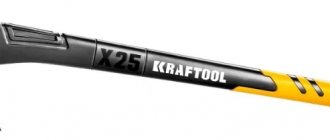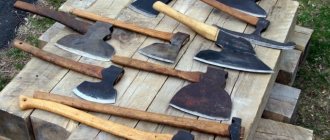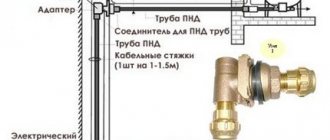In the process of choosing foam concrete for building a house, studying its properties, characteristics and masonry technology, many people think that the production of foam concrete can become a profitable business.
At the very least, self-production will allow you to save on the purchase of foam blocks and provide a feeling of confidence in their quality. And the equipment can be sold after construction.
Equipment for the production of foam concrete
The statement that making foam blocks with your own hands is possible and profitable is beyond doubt. The sales market for this wall material is constantly developing, both in Russia and Ukraine. Therefore, the feasibility of production is an objective fact. The main thing is to provide the manufactured foam concrete block with the required quality and set a competitive price for it.
Let's look at what influences these indicators.
Two types of foam concrete installations
Foam concrete has 2 main components: foam and concrete. I succeeded in two types of installations for foam concrete.
Conventional - separate foam generator, separate mixer
The majority of such installations. In them, the foam is prepared separately and added to the mixer with cement.
Its components:
- concrete mixer (not ordinary, but special)
- foam generator
- compressor
The operating principle is as follows. Mix the concrete separately. Separate foam generator. Add the finished foam to the mixer. We close it, build up pressure, the foam concrete flows through the hose.
One of the manufacturers of such installations is spetsgriffon.rf
Cavitation installations
Consists of a cavitation unit and a concrete screw pump.
In such an installation, the stirrer is a vertical “barrel”. In it, at the bottom, like in a kitchen mixer, the blades rotate at a very high speed. Pour all the components into it. Including foaming agent and fiber.
All this rotates at wild speed and this causes bubbles to form in the concrete. We pour the foam concrete into a tub from which the pump delivers it to the hose.
As a result, such concrete turns out to be of higher quality and more homogeneous. And fiber increases its strength.
Such installations are manufactured by Sarmat-Tornado LLC. https://www.sarmat-tornado.ru/
Mobile equipment
Mobile equipment for the production of foam concrete
To work with foam concrete directly on site, a lot of mini-plant models have been developed. Some are large-sized with high productivity, while others fit perfectly into a room for pouring floors, for example, like the photo below.
Portable installation for the production of foam concrete with a screw drive
We discussed the remaining parameters that the mixer must meet in more detail above. By the way, if you want to make blocks at home for your needs, then such portable equipment will be just right. The main thing is not to make a mistake with the volume of the mixer and the presence of free formwork.
Well, I would like to warn those who do not give up and want to make equipment for foam concrete with their own hands. Remember that the stingy pays twice, or even three times. Therefore, first make detailed calculations of the benefits of self-manufacturing installations and purchasing factory analogues, which can always be sold as unnecessary, when few people want to mess with a “homemade” one.
Comparison of conventional and cavitation
| With foam generator | Cavitation | |
| pros | + Such installations are cheaper. + They are more widespread and there is more experience in using them. | + stable density + simplicity and minimum risk of getting defective + higher strength + ability to make very low density foam concrete |
| Minuses | — Strong instability in the density of concrete at the outlet (+-30%) — It is necessary to adhere to the regulations very carefully. All loading intervals, number of components, temperature. If you pour it yourself or under supervision, it’s fine. If they are hired workers, they can make a defect instead of a normal product. — More nodes means more places where it can break. | — Their distribution is small, which means there are few reviews, little experience. - High price. |
| Equipment suppliers and prices | Here's an example: Manufacturer's website Installation of Sunny-014 + compressor - 150,000 rubles. | Manufacturer's website Set: 250-350,000 rub. |
Block making methods
Small production will initially require only about 300,000 rubles, a small staff of workers and a minimum area for a mini-workshop.
Mixture preparation technologies
Scheme of the barotechnological method.
The first is the barotechnological method. It is considered the most economical, as it does not require large expenditures on equipment. Small firms and enterprises prefer it.
The technology is like this.
- Water, sand, cement, hardening accelerators and a foaming composition are sent to a special mixer.
- Then air is let in.
- The components are thoroughly mixed.
- The finished mixture is fed under high pressure into a mold for foam blocks, where it takes on its final form and hardens.
The process is so simple and inexpensive that almost anyone can open a mini-production with their own hands and strength.
But there are also several negative points:
- low strength of the finished product due to the large proportion of water in the mixture;
- the pores are too large, which also affects the strength of the material;
- synthetic additives and foaming agents, which are necessarily added to the mixture, affect the environmental friendliness of the product.
Steam generator.
The second method is to use a steam generator. Although in this case there is a higher cost of equipment for the production of foam blocks, the products are of higher quality. Here it is possible to introduce components in optimal proportions using a dispenser.
Moreover, first, dry components (sand and cement) are sent to the mixer, and then liquid components (water, necessary additives) are added. When mixing, foam is introduced into the container, and everything is finally combined.
The advantage of the method is that it is possible to dose the components in any proportion, thus making blocks of a given strength. The semi-finished product is pressurized into molds, where it acquires its final configuration and desired density.
Note! Thus, by making slightly larger expenses than in the previous case, you can get a profit that will recoup the investment. You will receive an absolutely environmentally friendly material, much more durable and of higher quality.
Product molding methods
Mold for casting blocks.
- Casting technology . In this case, the mixture is poured into special cassette-type metal molds. The most popular sizes are considered to be forms with a height of 60 cm. The simplicity of the technology, as well as the reasonable cost of the equipment, can be considered as advantages. Among the disadvantages are the frequent mismatch of blocks in size and frequent defects in geometry. This happens if homemade low-quality molds are used, the price of which is much lower than professionally made ones. Often, failure to comply with the technology leads to defects; uneven corners arise due to insufficient drying of the block. By speeding up the process, an unscrupulous manufacturer pulls the product out of the mold ahead of schedule.
- Cutting method . It consists of two stages of molding - casting the finished mixture into a very large mold, then stripping and cutting into blocks of the required size. The result is a material with very precise geometric shapes and dimensions. Chain and band saws, as well as strings, are used for cutting.
Which installation to choose
I prefer the cavitation one from Sarmat-Tornado. The arguments are as follows:
- no need to bother with foam - regulate, select its density
- small dimensions
- no foam generator, which means fewer nodes where something can break
- the creators of “Sarmat-tornado” themselves work with this installation, about which there are a number of videos on their channel
There is only one minus - it's expensive. Although this is relative. After all, a) this installation can be sold after construction is completed and b) you can make money from it and, if not at home, then at least insulate floors to order.
Production of foam blocks using the sawing method
Currently, many factories are opening the production of foam blocks with cutting systems that can be purchased for any line and equipment.
The essence of the cutting complex is that the mixture is poured into one large mold, rather than several small ones, after which the resulting large foam block is cut into small ones, which are very smooth and have an ideal shape.
The cutting set is also a very necessary piece of equipment for the production of foam blocks.
Option for self-builders. The cheapest equipment for foam concrete
I came across a small mobile kit for creating foam concrete. No installation. I contacted the author who provided the following information.
The kit required for this technology costs 23,000 rubles. It includes:
- automatic foam generator,
- suction line with insertion into the container,
- attachment for a two-spindle mixer,
- connecting hose from the foam generator to the mixer.
You need to purchase:
- Any two-spindle mixer I recommend taking a closer look at the BISON EXPERT ZMR-1350E-2: price - quality. When selecting, you should pay attention to: the presence of speed control, the direction of mixing - from top to bottom, and even better, if there is a reverse - changing the direction of mixing, like the ZUBR ZMR-1400 EP-3.
- compressor , 2.2 kW, with a 50 l receiver, suction from 300 to 400 l/min. Like this: ZUBR ZKPM-360-50-2.2 (RUB 15,000) or FUBAG VDC 400/50 CM3 (RUB 19,000 for 2021) In general, they are all similar. A single-cylinder one, like this AURORA WIND-50 for 12,000 rubles, is also suitable. In short, you need to select it according to productivity so that it is around 300 l/min. More is better. If you have 200 l/min or more available, then you can try with it, it will just turn on more often and work to its fullest, without much reserve.
- It is better to use protein, organic foam concentrate Foamin C, Foamcem (Laston), Addiment SB 31L, Russian - Etalon, Foam X, etc.
- cement is better 500 D0
- The sand is finer. It’s even better if there is fly ash from thermal power plants, dolomite flour, mineral powder, etc. You can also add it to sand. For ultralight grades D200-400, sand is not used. Either with cement alone, or with the addition of chalk, mineral powder, dolomite flour, etc. up to 20%.
You can order the kit from the author Igor.
This application video shows how you can easily make foam concrete D200 ! The author gives a recipe for such concrete. 1 liter of such concrete weighs only 200 grams! That is, 5 times lighter than water. On the author’s channel there is a video of mixing foam concrete for walls (D600) with a recipe.
In my opinion, this is the best solution for insulating the attic floor and the floor of the first floor. Combined with wooden I-beams, it’s a blast!
Equipment for curing foam concrete blocks
When purchasing basic installations for the preparation of foam concrete, the organization of production as a whole does not end. So what else could you possibly need?
Heat and humidity chamber
Horizontal autoclave for holding blocks
As almost everyone already knows, foam concrete blocks come in autoclave and natural hardening. The first products are of the best quality, since they are aged in the most favorable conditions. Such pleasure costs a lot, and for small industries it is not advisable to purchase autoclaves, since almost all models have a large loading volume.
For this reason, foam blocks harden under natural conditions. If in the summer this takes about a day, then at sub-zero temperatures the mold turnover rate decreases sharply. Some people cover the formwork with industrial batting and polyethylene to preserve heat, while others go further and create a chamber for steaming.
Steaming chamber for foam concrete
Such a “room” is an isolated room inside the workshop, where a certain heat and humidity regime is maintained. For this, there are special steam generators that automate the entire process, doing all the work for you. Again, purchasing such equipment requires investment.
If there are no available funds yet, you can make a budget option:
- fence off part of the workshop with accessible, inexpensive material - for example, the same blocks, used bricks or corrugated sheets;
- install gas heating pipes into the chamber;
- Place buckets of water in the chamber.
During steaming, gas heating is turned on and the optimal mode is maintained, with a humidity of at least 65%. As they say - cheap and cheerful. But during certification, it is better to remain silent about this method of aging blocks.
Cutting equipment for foam concrete monolith
Foam concrete cutting machine
Equipment for cutting foam concrete comes in two types of action. Some complexes cut the monolith, as they say: without leaving the cash register - immediately after the blocks are unmolded. This is very convenient, since you only need to store the finished products and that’s it - no extra work steps.
The blocks are cut with special strings that are highly accurate. But they are also characterized by a short service life and high cost.
Automated cutting machine
Another type of cutting installation involves transferring a foam concrete monolith onto it and direct sawing, which occurs using circles. This type of equipment is more durable and economical to maintain, although it is not always convenient to use.
Cutting foam concrete
Which machine to choose depends on the production base. For example, they plan to build a workshop in advance for mobile equipment, since special rails and space are needed to move it. The stationary installation is universal and can be used even outdoors - the main thing is to ensure unhindered supply of the foam concrete monolith.
Why foam concrete is better than cotton wool and polystyrene foam
Judge for yourself. The thermal conductivity of mineral wool is 0.045-0.055, and D200 foam concrete is 0.05-0.06. Okay, let's correct for humidity and assume that the concrete is denser than D300. It's still 0.08-0.09. However, consider the advantages of foam concrete over cotton wool and foam plastics:
- long service life
- resistance to water, steam, condensate, leaks
- resistance to insects and mice
- sound insulation - can be useful for attic floors + if there is a road nearby, it will not be superfluous
How to calculate the required amount of foam block for a house?
There are several ways to calculate the required amount of foam block. The most common are: independent calculation and the use of special calculators. You can easily find a foam concrete calculator on the Internet.
We will look at how you can carry out calculations without using the latter using the example of a building 3 meters high and 11*15 meters in size.
It looks like this:
- We calculate the perimeter: 11*2+15*2=52 meters;
- We calculate the area of all walls excluding partitions: 52*3=156 m2;
- We will use a block of size 625*250*300 and we will lay it at 300;
- We calculate the area of the block: 0.625*0.3=0.1875 m2;
- We get the number of blocks in pieces: 156/0.1875=832;
- Convert to cubes: block volume=0.625*0.3*0.25=0.0375 m3; 1/0.0375=26.6 pieces of blocks in one cube; 832/26.6=31.28 m3 will be needed.
Since experts advise purchasing (manufacturing) products with a small supply, we will need about 33-35 m3 of blocks.
Related Posts
- What is the difference between aerated concrete and foam concrete?
- Methods for finishing the walls of a house and apartment made of foam blocks inside
- House made of monolithic foam concrete
- Foam block house, pros and cons
- Reliable and strong house made of foam blocks: stages of construction
- A simple machine for making blocks with your own hands
- How to glue fiberglass correctly?
- Clay concrete
- Pros and cons of aerated concrete blocks
- Adhesive foam for aerated concrete blocks
- How to cut metal using a grinder
- Polyurethane foam that can be used instead of cement
- How to make aerated concrete?
- Why does the air conditioner gurgle when not working when there is wind?
- Building a house from sawdust concrete with your own hands
- Which is better: polystyrene foam or polystyrene foam?
- Density of wet sand: properties and melting point of river sand
- Ceramic blocks: pros and cons
- Which blocks are better for building a house?
- How to update old tiles in the bathroom
- How to make wood concrete blocks
- The door handle creaks: causes of the problem and solutions
- Isover thermal insulation overview
- How to pull a pipe out of a well and how best to get a casing link: we study in general terms
- Do-it-yourself aerated concrete laying technology
Read with this
- What is the difference between aerated concrete and foam concrete?
- Methods for finishing the walls of a house and apartment made of foam blocks inside
- House made of monolithic foam concrete
- Foam block house, pros and cons
- Reliable and strong house made of foam blocks: stages of construction
- A simple machine for making blocks with your own hands
- How to glue fiberglass correctly?
- Clay concrete
- Pros and cons of aerated concrete blocks
- Adhesive foam for aerated concrete blocks
What problems await beginning foam concrete workers?
- The filler is usually sand, which needs to be selected. It needs a vibrating sieve. Sarmat-Tornado has them, but the price is 100 thousand rubles. - a serious investment for a self-builder. The quality of concrete depends on this.
- Here is another series of plugs that slip in the rollers: the density of the concrete, the density of the foam, the concrete is dense at the bottom, the cap is less dense at the top, when fed to a height of several meters, due to the concrete’s own weight, its density changes. In general, there are a lot of problems that you will only find out about when you try to make foam concrete yourself.
Additional equipment for the production of foam blocks
In addition to the installation itself for the production of foam concrete, you additionally need to purchase:
Compressor
Necessary for supplying the foam generator with compressed air. The minimum possible equipment productivity should be 0.5 cubic meters/min. at a pressure of 6 atm. Its cost depends on the characteristics and starts from 40 thousand rubles.
Forms for pouring foam concrete
The production of foam concrete, in contrast to the production of aerated concrete, involves the production of individual blocks. Which necessitates the use of special forms for foam blocks. However, if the solution is intended to strengthen the floor or roof and is poured into formwork (monolithic foam concrete), blocks are not used.
There are different types of forms on the market, their differences are as follows:
- mold material: metal or plywood;
- thickness of the mold steel (varies in the range of 3-6 mm)
The cost of a metal mold with a wall thickness of 3 mm, depending on the size of the blocks, is shown in the table.
| Block size | Working volume of m.cubic form | Number of foam blocks | Cost, rub. |
| 600x300x200 | 0,2 | 6 | 15 000 |
| 600x300x200 | 0,50 | 14 | 35 000 |
| 600x300x200 | 1,25 | 35 | 70 000 |
| 600x300x200(100) (two standard sizes of blocks) | 1.25 | 35 (70) | 76 300 |
| 600x300x200(x100) | 2.52 | 70/140 | 147 000 |
| 600x300x300 (x250,200,150,100,50) (six standard sizes of blocks) | 2.5 | 165 000 |
conclusions
- As far as I understand, in installations with a foam generator, everything is not at all simple. You need to select settings to obtain foam concrete of the required quality.
- The cavitation unit is easier to use. Like Toyota compared to Lada. There are fewer variables that affect the density and uniformity of foam concrete. As a result, the output is a stable composition of foam concrete without “dancing with a tambourine” and fine adjustments.
Overall: if you have a budget, it’s better to take Tornado. Just a minimum of money - we take the kit from Igor.
Brief information about foam concrete
This is a concrete material with a cellular structure. Such properties are achieved due to the closed air bubbles contained in the material. For this reason, the blocks do not differ in the required density and thermal conductivity.
They are often used in the construction of multi-storey buildings or in the construction of partitions. The material can be easily processed both manually and mechanically. The use of foam concrete makes it possible to:
- reduce the cost of material;
- obtain the required thermophysical indicators;
- do not create large load effects on supporting structures;
- perform installation work quickly.
However, the production of foam concrete has characteristic disadvantages. The material is not strong enough, absorbs moisture, and shrinks significantly.
